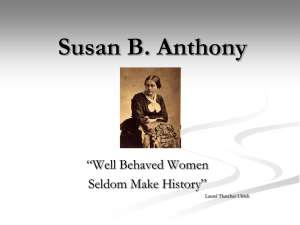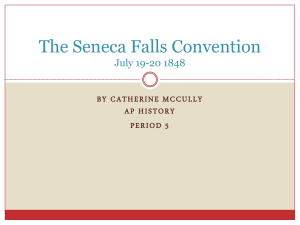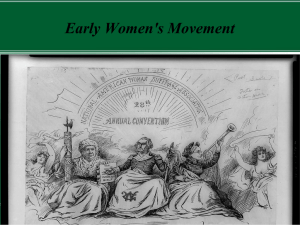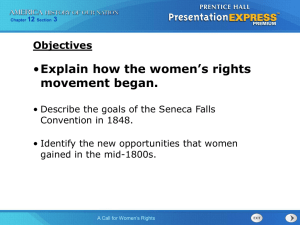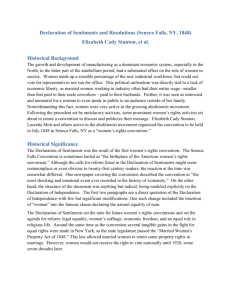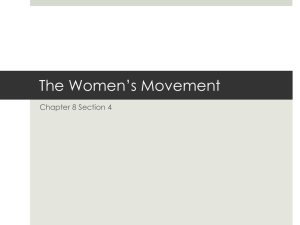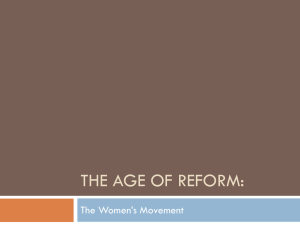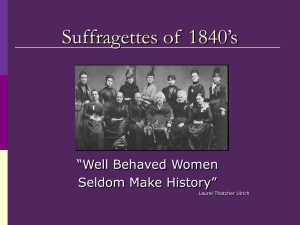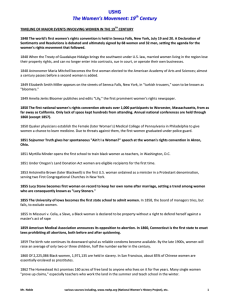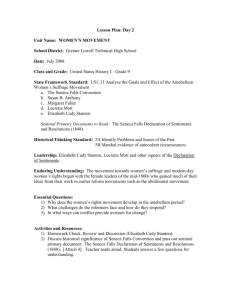Domestic Spheres - Duluth High School
advertisement
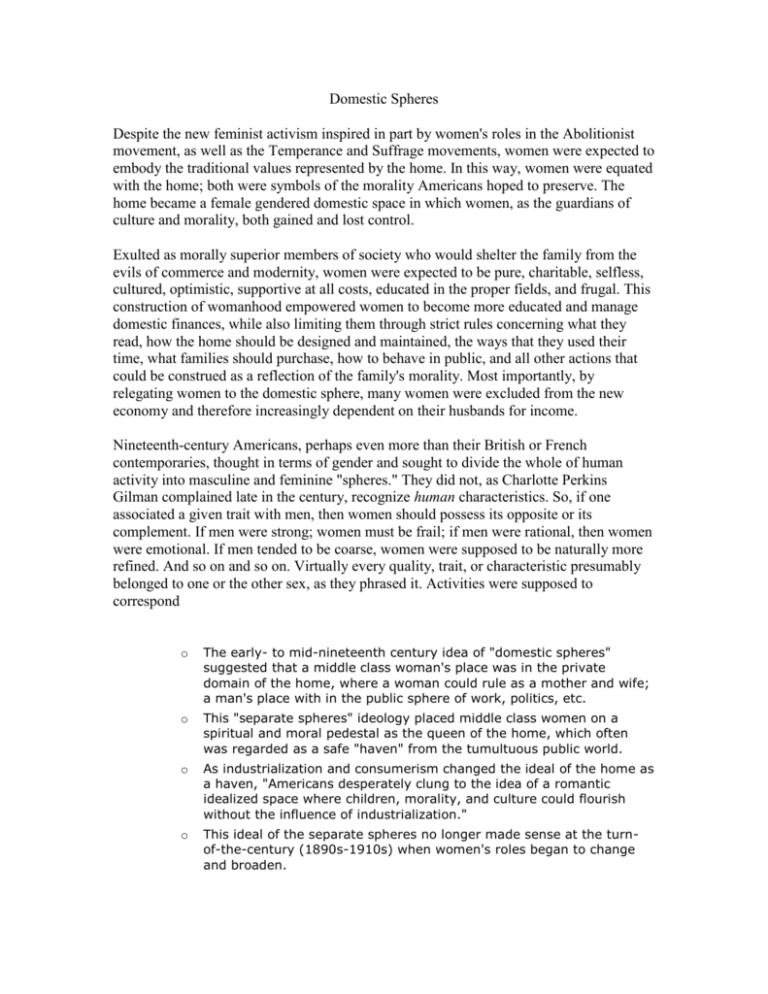
Domestic Spheres Despite the new feminist activism inspired in part by women's roles in the Abolitionist movement, as well as the Temperance and Suffrage movements, women were expected to embody the traditional values represented by the home. In this way, women were equated with the home; both were symbols of the morality Americans hoped to preserve. The home became a female gendered domestic space in which women, as the guardians of culture and morality, both gained and lost control. Exulted as morally superior members of society who would shelter the family from the evils of commerce and modernity, women were expected to be pure, charitable, selfless, cultured, optimistic, supportive at all costs, educated in the proper fields, and frugal. This construction of womanhood empowered women to become more educated and manage domestic finances, while also limiting them through strict rules concerning what they read, how the home should be designed and maintained, the ways that they used their time, what families should purchase, how to behave in public, and all other actions that could be construed as a reflection of the family's morality. Most importantly, by relegating women to the domestic sphere, many women were excluded from the new economy and therefore increasingly dependent on their husbands for income. Nineteenth-century Americans, perhaps even more than their British or French contemporaries, thought in terms of gender and sought to divide the whole of human activity into masculine and feminine "spheres." They did not, as Charlotte Perkins Gilman complained late in the century, recognize human characteristics. So, if one associated a given trait with men, then women should possess its opposite or its complement. If men were strong; women must be frail; if men were rational, then women were emotional. If men tended to be coarse, women were supposed to be naturally more refined. And so on and so on. Virtually every quality, trait, or characteristic presumably belonged to one or the other sex, as they phrased it. Activities were supposed to correspond o The early- to mid-nineteenth century idea of "domestic spheres" suggested that a middle class woman's place was in the private domain of the home, where a woman could rule as a mother and wife; a man's place with in the public sphere of work, politics, etc. o This "separate spheres" ideology placed middle class women on a spiritual and moral pedestal as the queen of the home, which often was regarded as a safe "haven" from the tumultuous public world. o As industrialization and consumerism changed the ideal of the home as a haven, "Americans desperately clung to the idea of a romantic idealized space where children, morality, and culture could flourish without the influence of industrialization." o This ideal of the separate spheres no longer made sense at the turnof-the-century (1890s-1910s) when women's roles began to change and broaden. o Late-nineteenth century American literature by women often wrestled with and critiqued separate spheres ideology. Elizabeth Cady Stanton's "Declaration of Sentiments," from the 1848 Seneca Falls Convention, reads: "The history of mankind is a history of repeated injuries and usurpations on the part of man toward woman, having in direct object the establishment of an absolute tyranny over her. To prove this, let facts be submitted to a candid world." Some of Stanton's specific points include the following: o Women were not allowed to vote o Women had to submit to laws when they had no voice in their formation o Husbands had legal power over and responsibility for their wives to the extent that they could imprison or beat them with impunity o Most occupations were closed to women and when women did work they were paid only a fraction of what men earned o Women were not allowed to enter professions such as medicine or law o Women had no means to gain an education since no college or university would accept women students o Women were robbed of their self-confidence and self-respect, and were made totally dependent on men Stanton was certainly on the mark when she anticipated "misconception, misrepresentation, and ridicule." Newspaper editors were so scandalized by the shameless audacity of the Declaration of Sentiments, and particularly of the ninth resolution -- women demanding the vote!-- that they attacked the women with all the vitriol they could muster. The women's rights movement was only one day old and the backlash had already begun! In ridicule, the entire text of the Declaration of Sentiments was often published, with the names of the signers frequently included. Just as ridicule today often has a squelching effect on new ideas, this attack in the press caused many people from the Convention to rethink their positions. Many of the women who had attended the convention were so embarrassed by the publicity that they actually withdrew their signatures from the Declaration. But most stood firm. And something the editors had not anticipated happened: Their negative articles about the women's call for expanded rights were so livid and widespread that they actually had a positive impact far beyond anything the organizers could have hoped for. People in cities and isolated towns alike were now alerted to the issues, and joined this heated discussion of women's rights in great numbers! The Seneca Falls women had optimistically hoped for "a series of conventions embracing every part of the country." And that's just what did happen. Women's Rights Conventions were held regularly from 1850 until the start of the Civil War. Some drew such large crowds that people actually had to be turned away for lack of sufficient meeting space! The women's rights movement of the late 19th century went on to address the wide range of issues spelled out at the Seneca Falls Convention. Elizabeth Cady Stanton and women like Susan B. Anthony, Lucy Stone, and Sojourner Truth traveled the country lecturing and organizing for the next forty years. Eventually, winning the right to vote emerged as the central issue, since the vote would provide the means to achieve the other reforms. All told, the campaign for woman suffrage met such staunch opposition that it took 72 years for the women and their male supporters to be successful. As you might imagine, any 72-year campaign includes thousands of political strategists, capable organizers, administrators, activists and lobbyists. The story of diligent women's rights activism is a litany of achievements against tremendous odds, of ingenious strategies and outrageous tactics used to outwit opponents and make the most of limited resources. It's a dramatic tale, filled with remarkable women facing down incredible obstacles to win that most basic American civil right - the vote.
